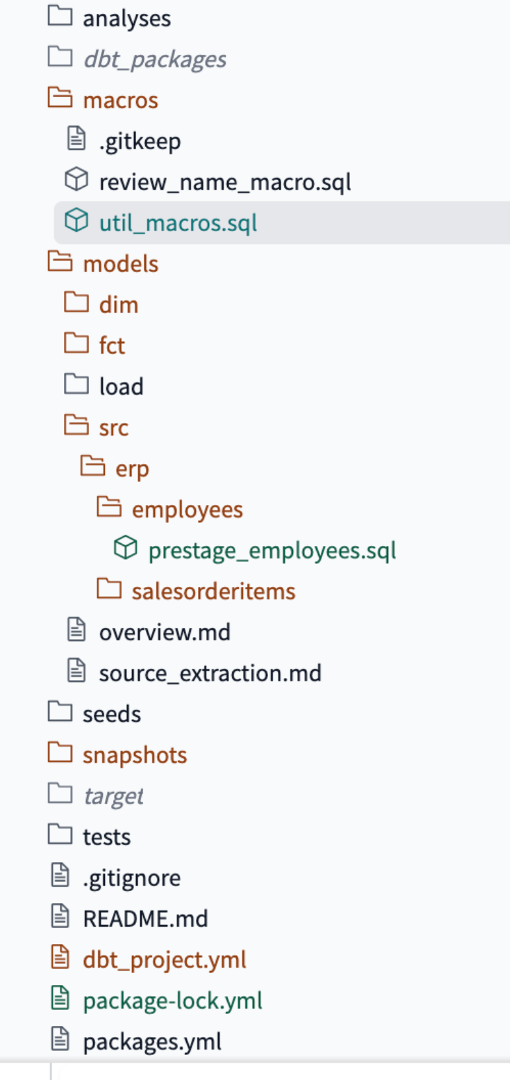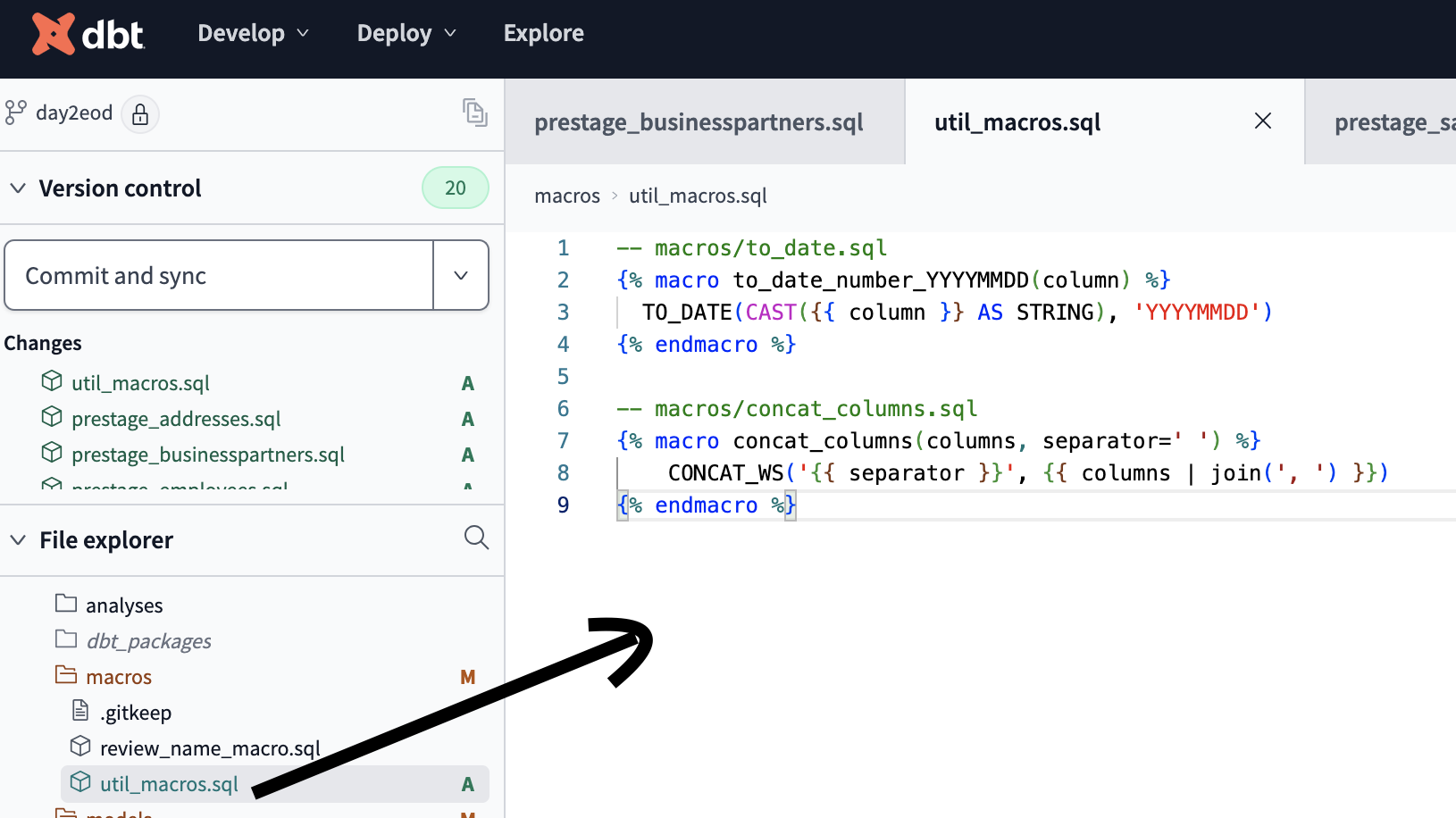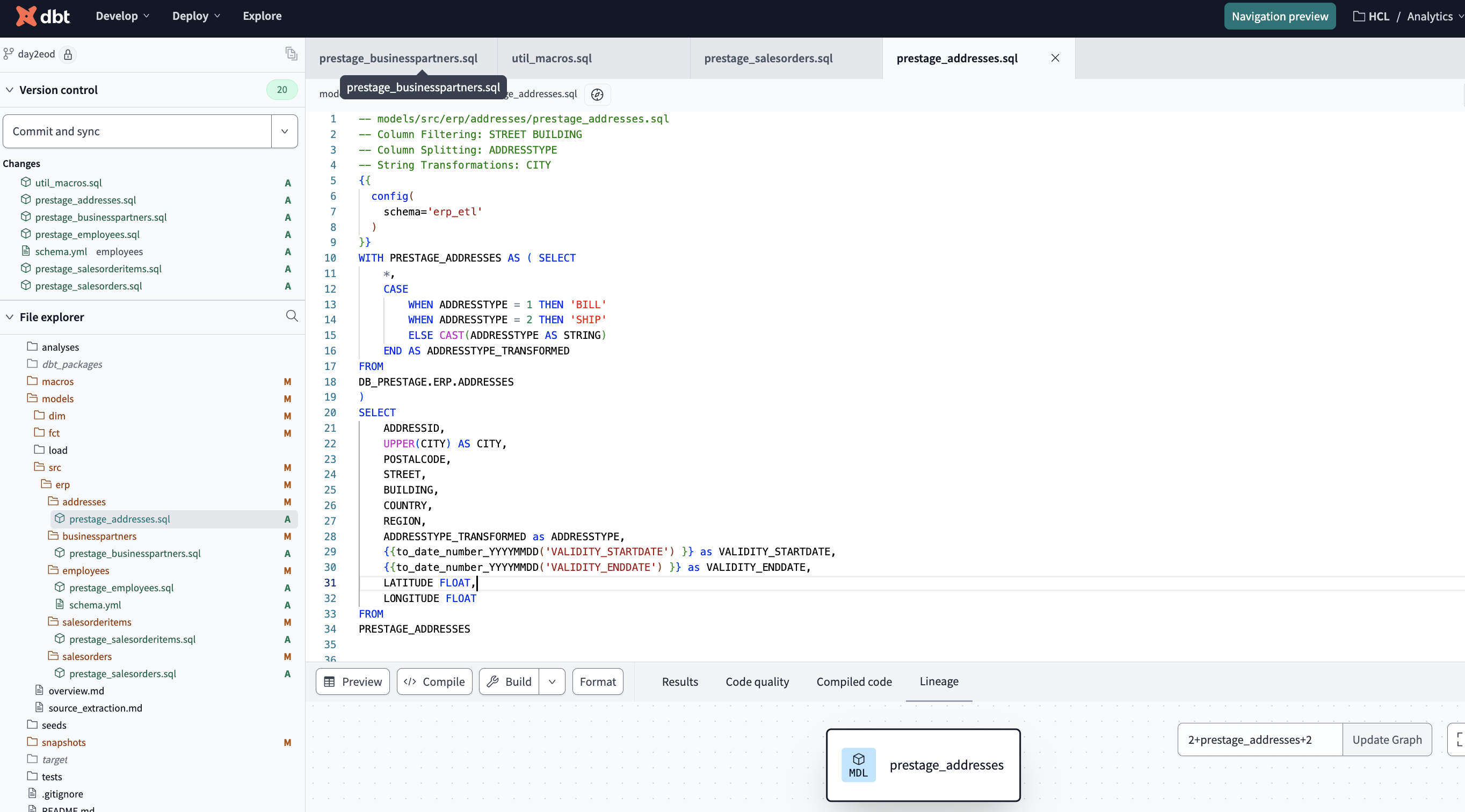Data Processing with DBT and Snowflake
Data Warehouse, Snowflake, 2024

I will be Using DBT to run some tranformations on Snowflake. I will be using the ERP data which I have used in multiple demos. Data was loaded into Snowflake stages from this demo.
Installation notes
- The below is what I always use to setup DBT Cloud on Snowflake
- The main configuration is the default schema: ERP_SCHEMA https://docs.getdbt.com/guides/snowflake?step=4
- Configure DBT on Github if needed.
Hello DBT
We will staging data from the src by performing column transformtions on the Employee table This is the inputdata

Using the default package.
The first run will have only one model which will be a src extraction.

Using a simple dbt_project.yml
- name: ‘dbterp’ : Name of the project
- +materialized: view : I am setting this as view so that I am able to look at the outcomes in snowflake.
name: 'dbterp'
version: '1.0.0'
config-version: 2
# This setting configures which "profile" dbt uses for this project.
profile: 'dbterp'
# These configurations specify where dbt should look for different types of files.
# The `model-paths` config, for example, states that models in this project can be
# found in the "models/" directory. You probably won't need to change these!
model-paths: ["models"]
analysis-paths: ["analyses"]
test-paths: ["tests"]
seed-paths: ["seeds"]
macro-paths: ["macros"]
snapshot-paths: ["snapshots"]
asset-paths: ["assets"]
target-path: "target" # directory which will store compiled SQL files
clean-targets: # directories to be removed by `dbt clean`
- "target"
- "dbt_packages"
# Configuring models
# Full documentation: https://docs.getdbt.com/docs/configuring-models
# In this example config, we tell dbt to build all models in the example/ directory
# as tables. These settings can be overridden in the individual model files
# using the `` macro.
models:
dbterp:
+materialized: view
dim:
+materialized: ephemeral
src:
+materialized: view
fct:
+materialized: table
First Model
The First Model which sources and creates the first staging layer which focuses on Column Transformation
- Renaming Columns: LOGINNAME as USERNAME
- Handling Missing Values: Names. coalesce: Replace null values with a specified value (empty string in this case) to prevent nulls from affecting concatenation.
- Column Merging: merging names into a single column
- Column Data Type Conversion: casting interger date types into a date
Cleaning up Addresses
- Column Filtering: STREET BUILDING
- Conditional Transformations: ADDRESSTYPE
- String Transformations: CITY
 I have additionally used macros for the column transformation: A dbt macro is a reusable piece of code written in Jinja, a templating language. Macros help automate repetitive tasks, making your dbt project more efficient and maintainable. You can think of a macro as a function that you can call with specific arguments to perform a task or generate code dynamically.
I have additionally used macros for the column transformation: A dbt macro is a reusable piece of code written in Jinja, a templating language. Macros help automate repetitive tasks, making your dbt project more efficient and maintainable. You can think of a macro as a function that you can call with specific arguments to perform a task or generate code dynamically.

First Run
A view is created in Snowflake when we run the above model.

